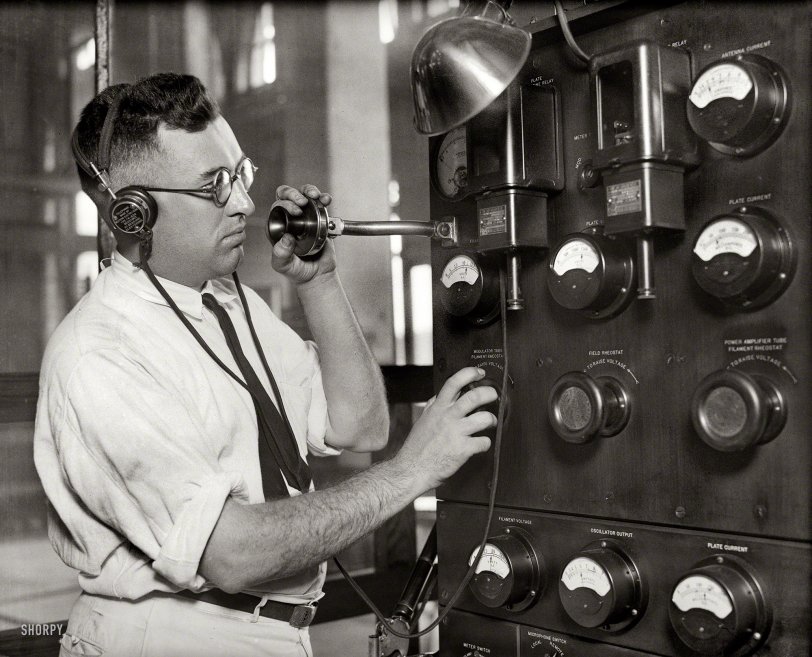


Framed or unframed, desk size to sofa size, printed by us in Arizona and Alabama since 2007. Explore now.
Shorpy is funded by you. Patreon contributors get an ad-free experience.
Learn more.

- Baldwin 62303
- Baldwin VO-1000
- Cold
- No expense spared
- Tough Guys
- Lost in Toyland
- And without gloves
- If I were a blindfolded time traveler
- Smoke Consumer Also Cooks
- Oh that stove!
- Possibly still there?
- What?!?
- $100 Reward
- Freeze Frame
- Texas Flyer wanted
- Just a Year Too Soon
- WWII -- Replacing men with women at the railroad crossing.
- Yes, Icing
- You kids drive me nuts!
- NOT An Easy Job
- I wonder
- Just add window boxes
- Icing Platform?
- Indiana Harbor Belt abides
- Freezing haze
- Corrections (for those who care)
- C&NW at Nelson
- Fallen Flags
- A dangerous job made worse
- Water Stop
Print Emporium
Can You Hear Me Now: 1925

1925. Washington, D.C. "Broadcasting equipment." Adjusting the "modulator tube filament rheostat." Harris & Ewing glass negative. View full size.
Standing Waves
The antenna current undoubtedly includes standing waves, measuring reflected power as well as forward power.
Probably they'd tune the antenna match to minimize it.
Miscalculating
These meter readings and math are not adding up. 1500V at 700ma is 1050 watts plate input, and at the typical efficiency of these early transmitters you'd be lucky to get half of that into the antenna so there's no way you can have an output of 1250 watts.
Furthermore, transmitters of this vintage used a balance ladder-line output not the 50-ohm coaxial output of modern transmitters. So the output impedance would be around 200-400 ohms which would make the antenna current even lower. My guess is there's a decimal in front of the numbers on the antenna meter that are just too blurred to see.
I suspect in those days before pi-output circuits the actual impedance varied so much with plate tuning that the output meter was nothing more than a relative indicator anyway.
There, can you hear it now?
how about now? louder?
Tuning a Transmitter
Always remember to "dip the plate" and "peak the grid." Otherwise, you're going to burn up the transmitter. That's from an old codger that learned electronics a long time before computers.
1kW? At least that!
With antenna current at 5 amps, and a typical transmission line/feed impedance of 50 ohms, that's 1250 watts output.
Heavy duty equipment
This transmitter was built like a tank. Probably Western Electric. They knew that time equals money in the broadcast field, and made the unit easy to adjust, right down to providing a telephone built into it for the technician to talk with an engineer while turning the knobs.
























On Shorpy:
Today’s Top 5